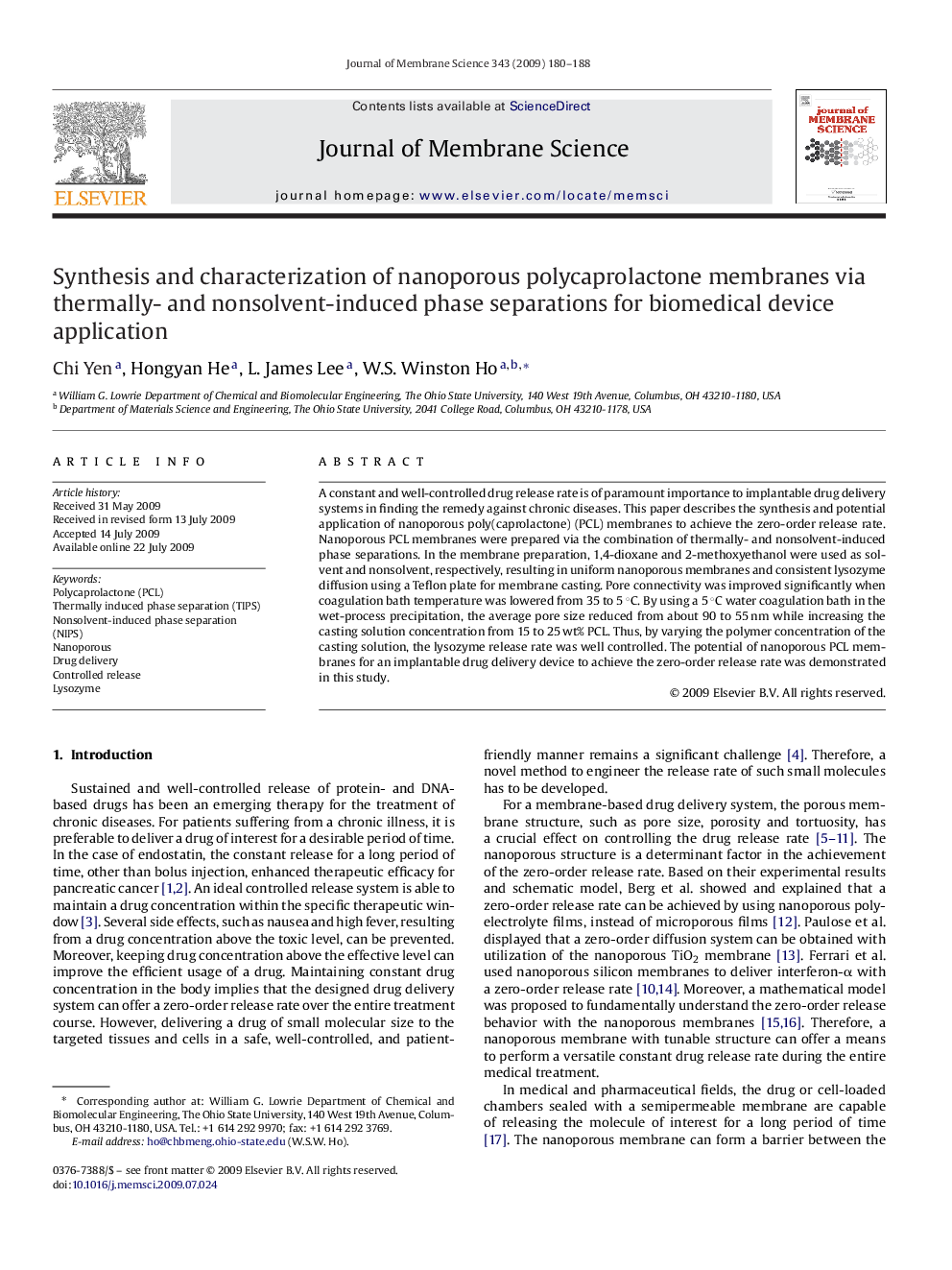| Article ID | Journal | Published Year | Pages | File Type |
|---|---|---|---|---|
| 636711 | Journal of Membrane Science | 2009 | 9 Pages |
A constant and well-controlled drug release rate is of paramount importance to implantable drug delivery systems in finding the remedy against chronic diseases. This paper describes the synthesis and potential application of nanoporous poly(caprolactone) (PCL) membranes to achieve the zero-order release rate. Nanoporous PCL membranes were prepared via the combination of thermally- and nonsolvent-induced phase separations. In the membrane preparation, 1,4-dioxane and 2-methoxyethanol were used as solvent and nonsolvent, respectively, resulting in uniform nanoporous membranes and consistent lysozyme diffusion using a Teflon plate for membrane casting. Pore connectivity was improved significantly when coagulation bath temperature was lowered from 35 to 5 °C. By using a 5 °C water coagulation bath in the wet-process precipitation, the average pore size reduced from about 90 to 55 nm while increasing the casting solution concentration from 15 to 25 wt% PCL. Thus, by varying the polymer concentration of the casting solution, the lysozyme release rate was well controlled. The potential of nanoporous PCL membranes for an implantable drug delivery device to achieve the zero-order release rate was demonstrated in this study.
